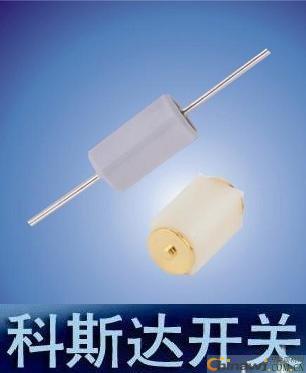Ball switch sensitivity. Ball switch directionality. Ball switch angle. Ball switch action. Ball switch function. Ball switch function, ball switch characteristics, ball switch characteristics, ball switch advantages, ball switch advantages 
The vibration switch is also an electronic switch that senses the magnitude of the vibration force to transmit the sensing result to the circuit device and activates the circuit. Some people call it a vibrating switch, and some people call it a slide switch or a sway switch. In fact, these names are not completely correct. The industry's name is generally divided into two categories, spring switches and ball switches. In fact, strictly speaking, the vibration switch should simply refer to the spring switch and does not include the ball switch. The name of the vibrating switch seems to be due to the homonym of "vibration" and "seismic", and a typo, which is recognized by people because of the long time. Strictly speaking, the name of the vibration switch is wrong, and other names such as slide switches, sway switches, etc. should refer to the ball switch. For the sake of convenience, the industry generally combines the spring switch and the ball switch into a vibration switch. The vibration switch is mainly used in electronic toys, small household appliances, sports equipment and various types of anti-theft devices. The vibration switch is an indispensable electronic component in many electronic products because of its flexible and sensitive triggering. From a professional perspective, it is divided into two categories: spring switch and ball switch. Both types of switches have two important index characteristics, sensitivity and directionality. The sensitivity of the spring switch refers to different products. In actual devices, the difference in the magnitude of the induced vibration force may occur, and the vibration switch. This difference is called sensitivity. Users will choose different vibration sensors with different vibration levels to meet the sensitivity of their products. For example, if a toy is slightly shaken on the hand and a ball is thrown onto the ground or wall, a differently-inducible spring switch is required to sense the vibration force to match the electronic circuit. Directionality refers to the direction of force, while the direction of force is roughly divided into three sides of three dimensions, six sides of up, down, left and right. The general product only requires sensitivity and has no directional requirements. Therefore, it is necessary to understand the use of the user's product before recommending that the user use that type of spring switch. The biggest difference between a ball switch and a spring switch is that the spring switch is an inductive shock or centrifugal force, preferably used upright. The ball switch is a change in the sensing angle and is preferably used in a tiled manner. The sensitivity of the ball switch is the magnitude of the sensing angle, which is transmitted to the circuit device to start the circuit. In actual devices, the difference in the sensing angle of different products occurs. This difference is called sensitivity. Users will require ball switches of different sensing angles to meet the sensitivity of the product because of the needs of different products. For example, when picking up a cup by hand and tilting it at a slight angle, the circuit device must make the IC start LED flash or make a sound. Customers will require differently sensed ball switches to sense the angle and match the electronic circuit. The directivity of the ball switch refers to the direction of the tilt angle, and its direction is roughly two sides.
Http://bodongkaiguan.net/ Â Check related product information. 